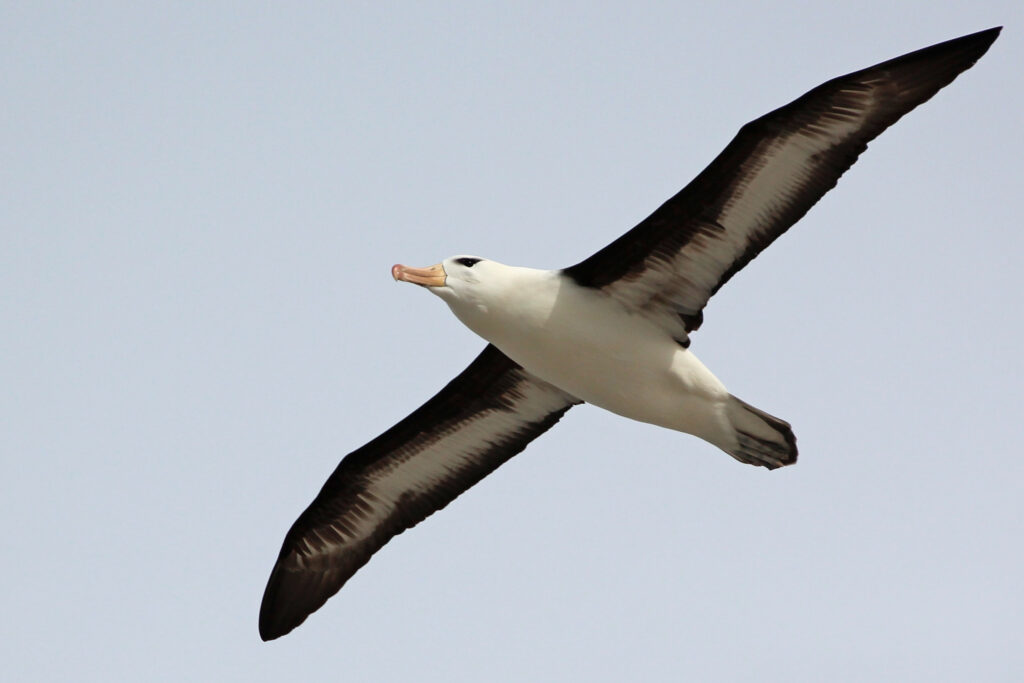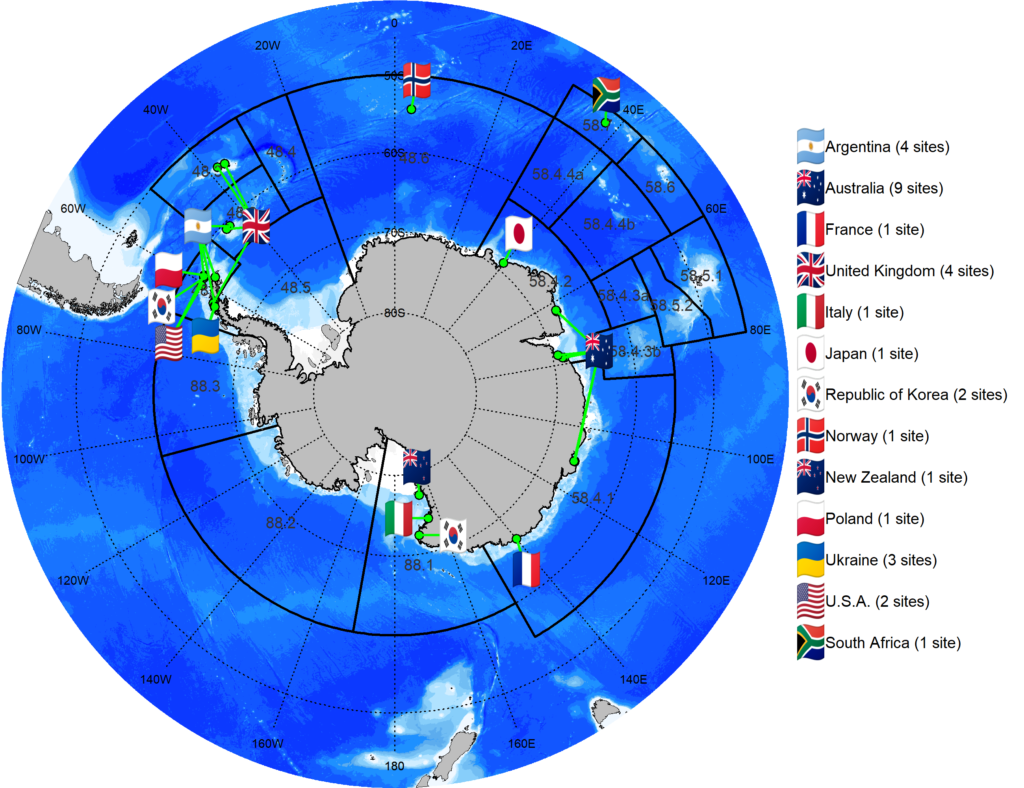Photo by Volker Siegel
40 years of monitoring the Antarctic ecosystem and managing fishing activities
Immediately after the CAMLR Convention entered into force, the first meetings of the Commission and Scientific Committee took place from 25 May to 11 June 1982. The focus of the Committee in these early years was to acquire data on the state of the Antarctic ecosystem, of fishing activities and the state of the fish and krill populations that were the subject of fishing. CCAMLR benefited from the work of the Scientific Committee on Antarctic Research (SCAR), particularly in the BIOMASS program, and the two major international collaborative research projects called the First and Second International Biomass Experiments (FIBEX, SIBEX). FIBEX, which took place in the austral summer of 1980/81 and involved 13 vessels from 11 nations, generated the first comprehensive survey of krill stocks and associated oceanography.
Other SCAR expertise, particularly on seabirds and marine mammals, was also of great benefit to the Scientific Committee. By 1984 three subsidiary working groups were meeting, one on data, one on fish stock assessment and the third on ecosystem monitoring. Formative discussions establishing the scientific basis for CCAMLR’s management approach were under way, and many of the scientific papers in these early years were collated in the first volume of CCAMLR Selective Scientific Papers with authors from Argentina, Australia, France, Germany, Japan, South Africa, the UK, the USA and the USSR.

Initial investigation by the Working Group on Fish Stock Assessment determined that one particular fish species, the marbled rock-cod, had been severely depleted by bottom trawl fishing in the 1970s. Acting on the advice of the Scientific Committee that the fishery should be closed, the Commission agreed its first conservation measures in 1985 and 1986 which prohibited fishing on this species at South Georgia, around the Antarctic Peninsula and around the South Orkney Islands. Over the next few years, the Working Group on Fish Stock Assessment developed assessments and advice on the other fish stocks taken by trawls in these areas, and the Commission started to set catch limits and regulations controlling fishing gear. Within 5 years, prohibitions on commercial fishing were extended to all fish species around the Antarctic Peninsula and the South Orkney Islands (CCAMLR Subareas 48.1 and 48.2 – see CCAMLR GIS), and have remained in place in these areas ever since, allowing these stocks to recover.
Meanwhile, the Working Group on Ecosystem Monitoring (later WG-CEMP) started to develop a monitoring program in 1984 and in 1987 agreed a standardised system and methods for monitoring specific parameters such as breeding and feeding success, in key indicator species and at identified study areas and sites.
The objective of the CCAMLR Ecosystem Monitoring Program (CEMP) is to:
- detect and record significant changes in critical components of the marine ecosystem within the Convention Area, to serve as a basis for the conservation of Antarctic marine living resources
- distinguish between changes due to harvesting of commercial species and changes due to environmental variability, both physical and biological.

The program does not attempt to monitor all dependent species within the Antarctic ecosystem, but concentrates on a few which are likely to respond to changes in the availability of harvested species (these dependent species are sometimes termed ‘indicator species’).
The program has expanded from 17 combinations of site, species and parameter in 1984 to 237 today, with 14 Members now being involved. It is by far the longest single time series of consistently collected ecological data in the Antarctic – one time series, on macaroni penguins, goes back to 1958 and is testament to the coordinated scientific work undertaken by the Members of CCAMLR.
The program monitors:
- Adélie penguin (Pygoscelis adeliae)
- chinstrap penguin (P. antarctica)
- gentoo penguin (P. papua)
- macaroni penguin (Eudyptes chrysolophus)
- black-browed albatross (Thalassarche melanophrys)
- Antarctic petrel (Thalassoica antarctica)
- Cape petrel (Daption capense)
- Antarctic fur seal (Arctocephalus gazella).
Some krill-dependent species, such as crabeater seal (Lobodon carcinophagus), while considered likely to respond to changes in krill availability, have not been used in monitoring because they live in the pack-ice and so are not amenable to repeated/annual monitoring.


The combined data from many indicators are used to provide a synthesised index of the ecosystem that is dependent upon krill (Figures 9, 10 and 11 in CCAMLR’s Krill Fishery Report).
Over the last few years there has been an increase in the amount of krill fishing, particularly in the Atlantic sector of the Antarctic (see Blog #3) and this has led to renewed concerns about the possibility that if catches are concentrated in areas where predators need to forage, the amount of krill available for them may be reduced. The Scientific Committee, and the Working Group on Ecosystem Monitoring and Management which subsumed the work of WG-CEMP in 1995, is making increasing use of CEMP data to understand trends in the krill-dependent Antarctic ecosystem and links to climate change and fishing, and to formulate management strategies that deliver CCAMLR’s conservation and management objectives.